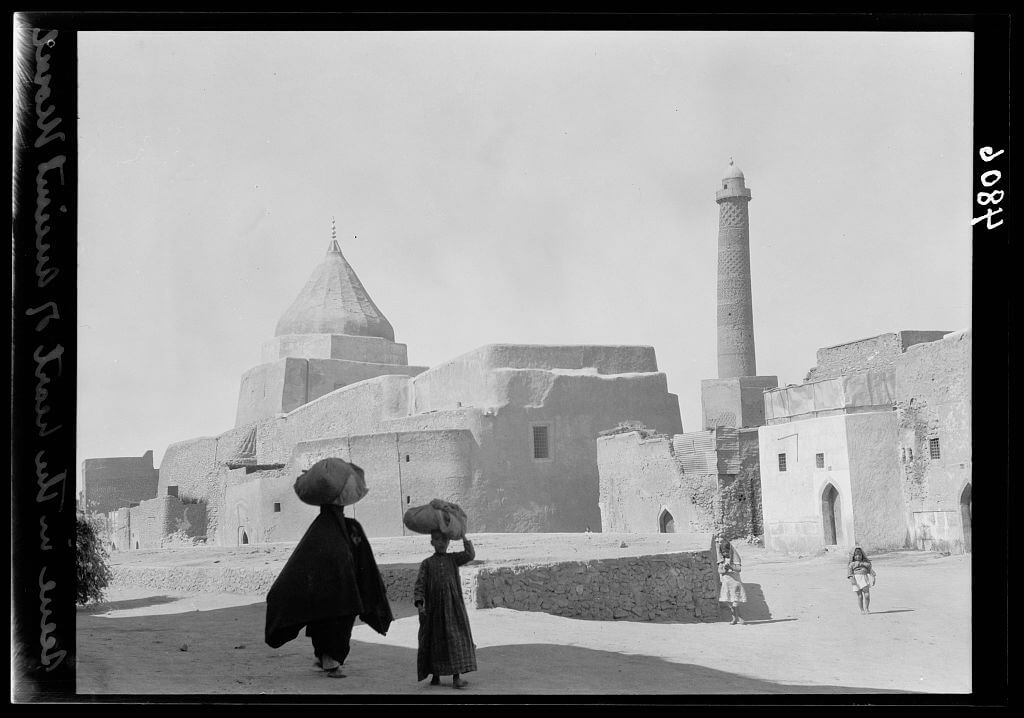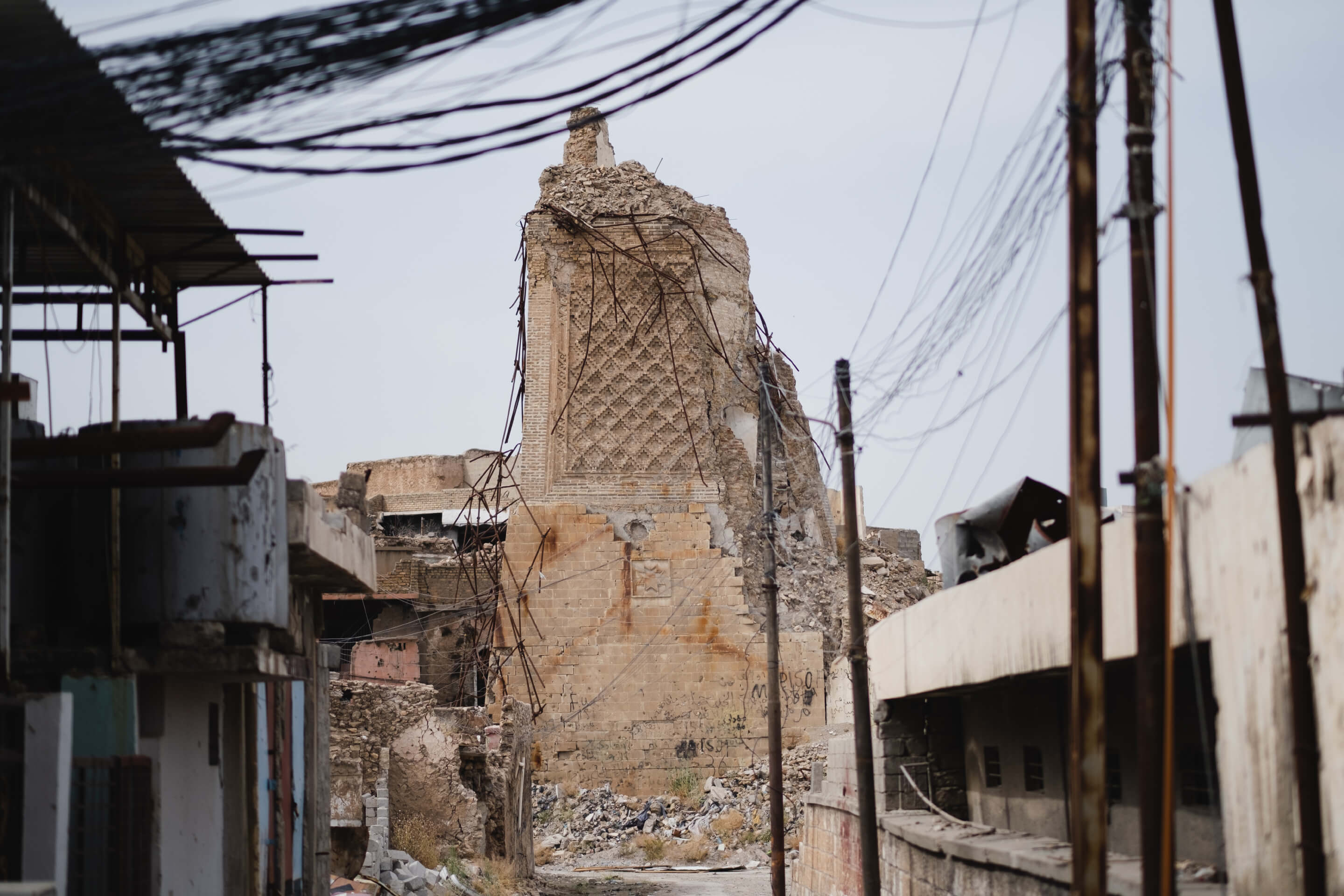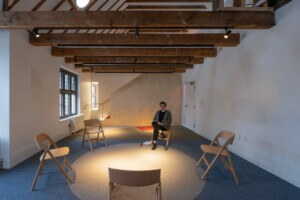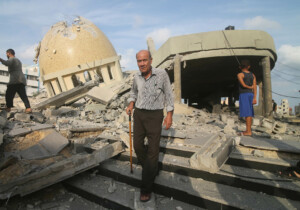When Abu Bakr al-Baghdadi, the now-deceased leader of the Islamic State of Iraq and Syria (ISIS), took control of Iraq’s second-largest city and declared a caliphate in the region in 2014, he did so from the grounds of one of Mosul’s most famous landmarks—the Great Mosque of Al-Nuri. First built more than eight centuries prior, the complex had undergone a series of expansions and renovations in the intervening years before its complete destruction in 2017. As U.S.-backed Iraqi troops advanced on the city, ISIS forces demolished the mosque and its centuries-old minaret.
Four years after the mosque’s ruin, the organizers of a UNESCO-led and UAE-funded design competition to spearhead the mosque’s reconstruction released renderings of their selected proposal in April of this year. The winners are a team of Egyptian architects whose design amalgamates local brick, alabaster, glass, and screen-like perforations in an attempt to pay homage to local building traditions. The landmark’s 12th-century minaret will be rebuilt in its original form, though the complex will be expanded to include a public park, religious high schools for both boys and girls, and a cultural center.

The Sunni Endowment Office and the Iraqi Ministry of Culture, both of which worked with UNESCO to organize the contest and award the $50,000 prize and $50 million contract, praised the project for its aesthetic beauty and regard for local traditions. But other leading architects in Iraq have voiced vehement criticism of the design, contending that it transplants non-native architectural elements into a fragile, yet historically rich context.
According to reports from the New York Times, the well-regarded Iraqi architect Ihsan Fethi called the competition and winning entry a “fiasco” and “terrible tragedy,” deriding the design as something that would be more fitting of the Emirates or other Gulf states than of Iraq. The proposal’s light limestone palette and sharp angles, compounded by the inclusion of non-native palm trees in certain renderings, sparked particular ire among local architects and planners. If built, the design would stand apart from the expressive arches and bluish stonework of much of Mosul’s older architectural fabric.

For Fethi, the project’s problems extend far beyond its aesthetics. The architect considers the proposal for a balcony above the prayer hall to accommodate dignitaries, a feature he labeled a “V.I.P. section,” an affront to Islam. He went on to criticize competition jurists for lacking sufficient knowledge of Islamic architecture and local idiosyncrasies to fairly adjudicate. The Egyptian architects’ design also includes only 20 parking spots for employees, which might pose serious issues in a city that is virtually devoid of any form of public transportation.
The Iraqi architects’ union issued a statement opposing the construction of the design, pointing out that it should have been consulted throughout the selection process. UNESCO convened a meeting with the union in response to the public outrage and maintains that changes to the chosen proposal could be made in the coming months.
On the ground in Mosul, crews continue to recover bricks and pieces of marble from the wreckage of the Al-Nuri Mosque, intending to use the fragments in the reconstruction of the complex. In a city resolved to rebuild after years of conflict and invasion, the recreation of a central religious complex is of paramount symbolic importance. Whether such critical reconstructions will happen in the image of old Mosul, however, remains to be seen.











